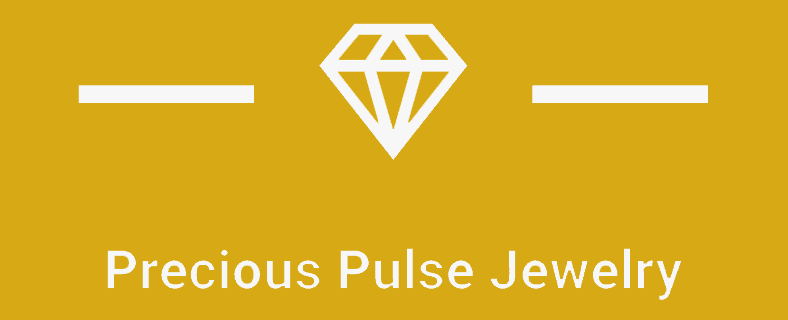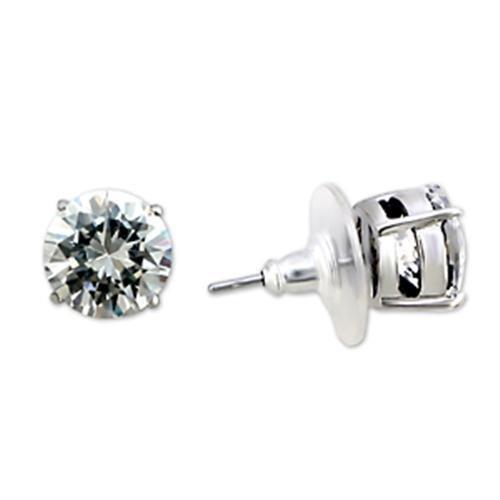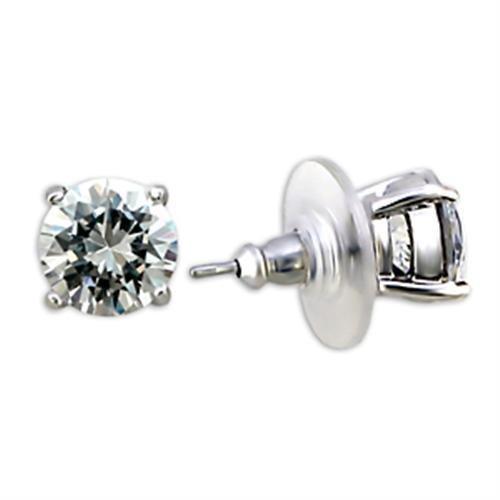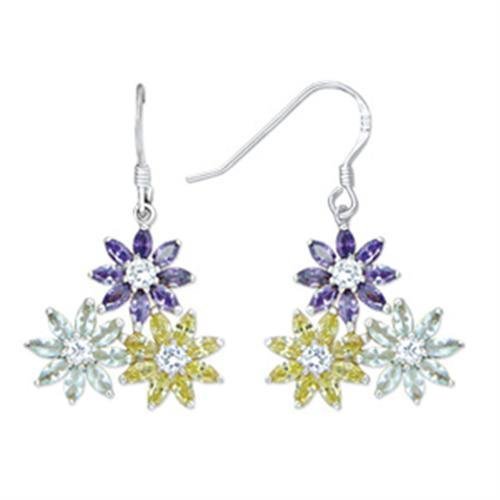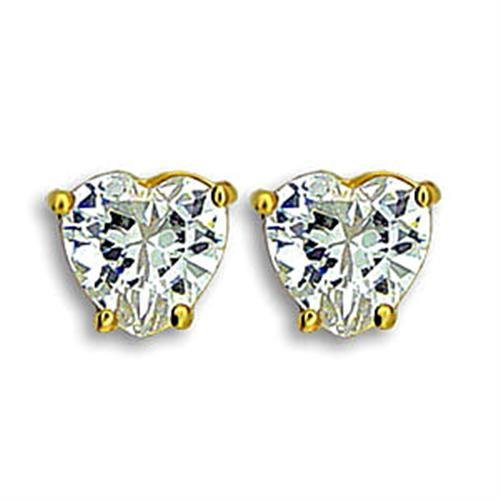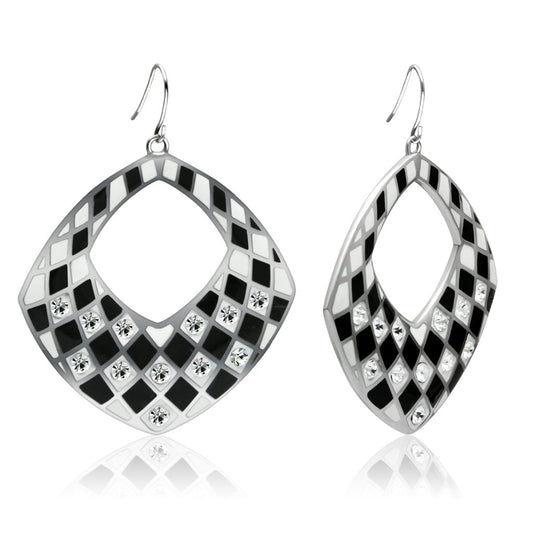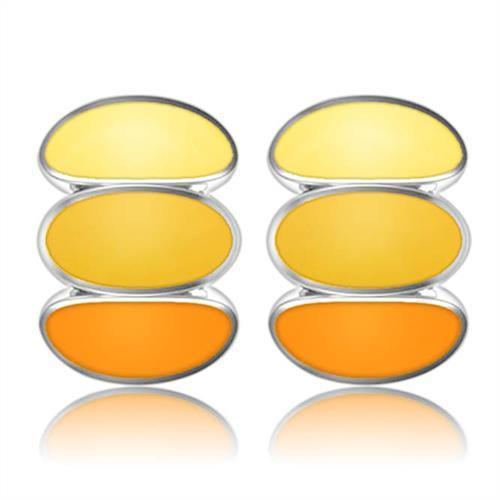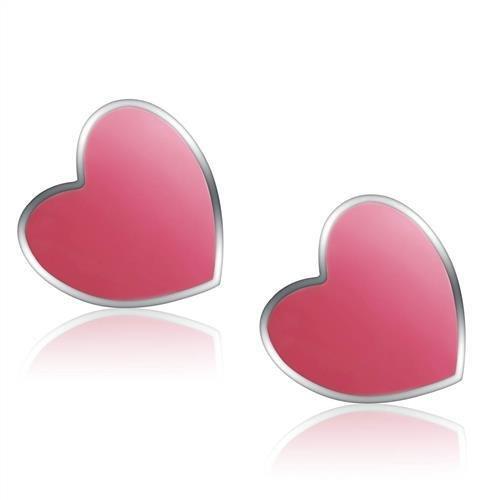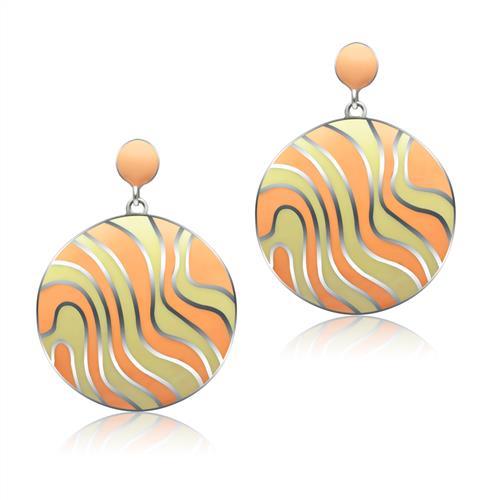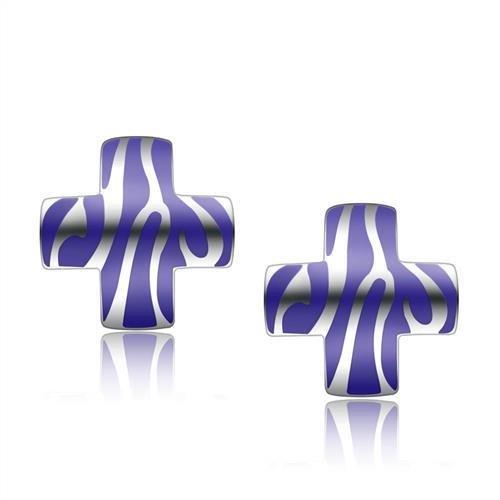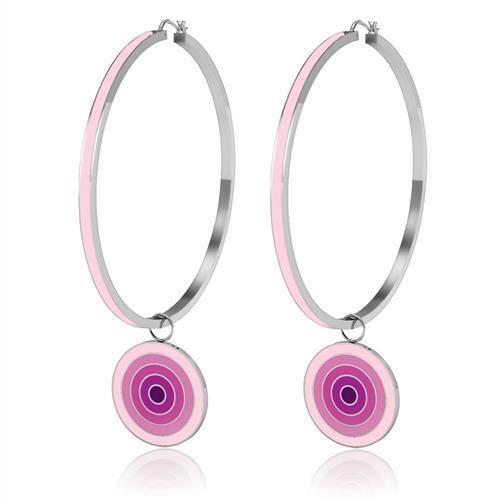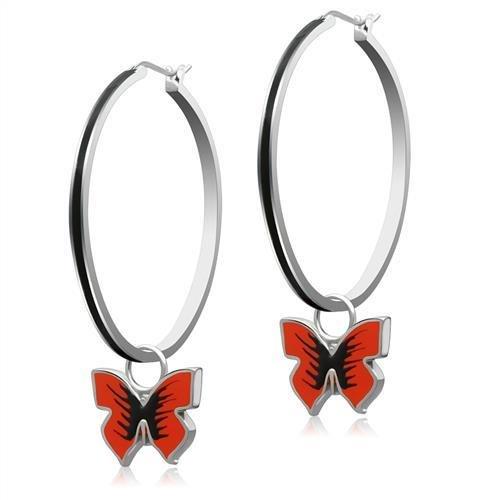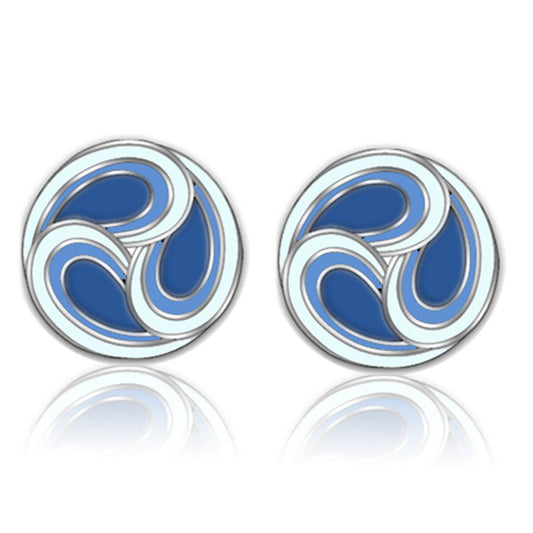Choosing an engagement ring is one of those huge, heart-pounding moments. But let’s be honest—getting the size wrong can turn that excitement into a serious headache. This guide is your roadmap to getting the fit right from the start, so you can skip the stress of returns and resizing.
Finding the Perfect Fit Without the Guesswork
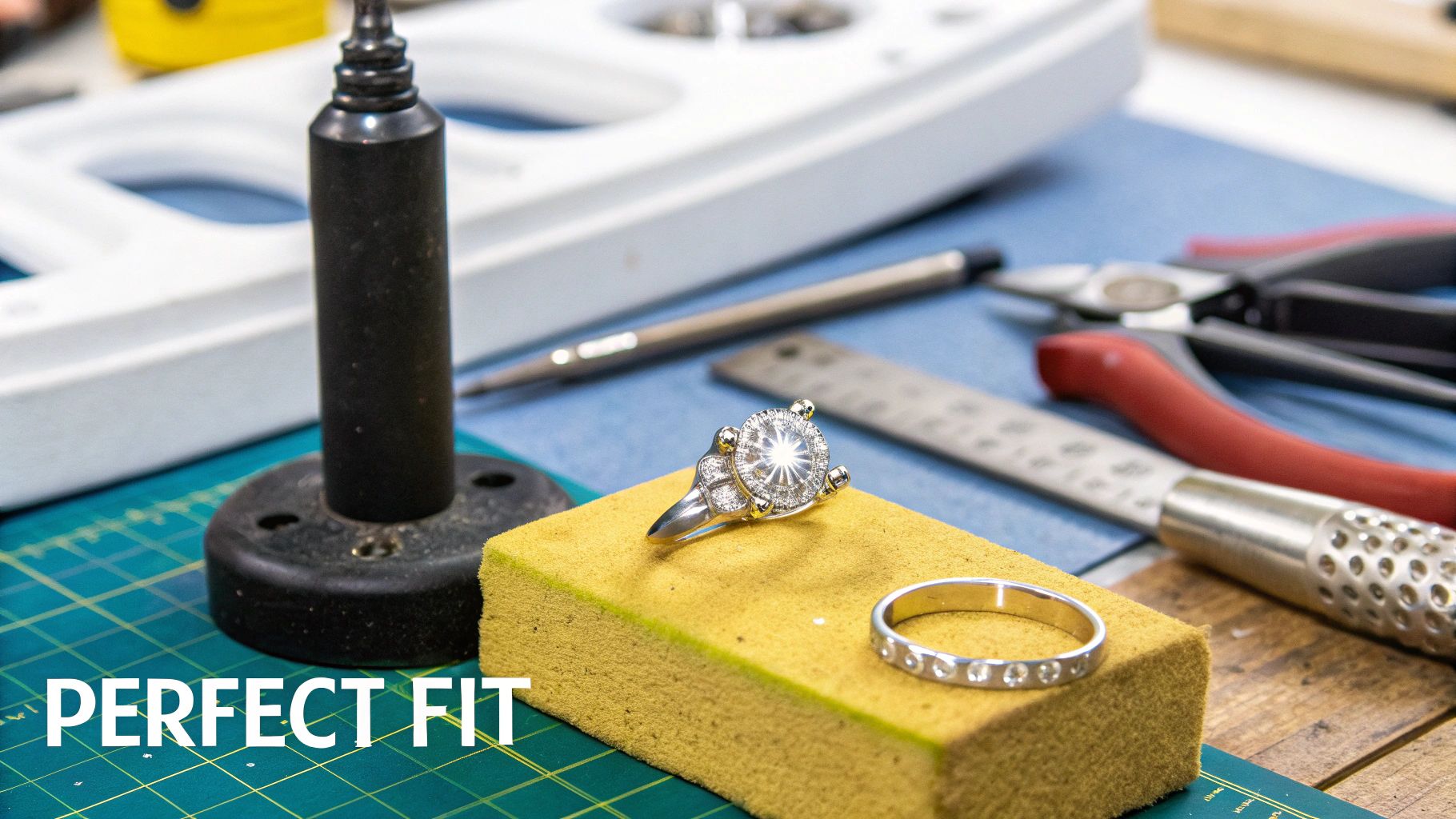
The journey to the perfect engagement ring is supposed to be all about joy. You’re picking out a symbol of your love, a piece of jewelry that’s meant to last a lifetime. But amidst all the excitement of choosing the right style and stone, one little detail can cause the most anxiety: the ring size.
It's a common fear. Will it be too loose, constantly threatening to slip off? Or will it be so tight that it’s uncomfortable? That worry is completely valid. A poorly sized ring can lead to disappointment, the extra cost of resizing, and a delay in being able to actually wear it.
Why Sizing Matters More Than Ever
Today's jewelry market is bigger and more accessible than ever, with incredible designs available from artists all over the world. That global access makes an accurate size absolutely critical. You're not just shopping down the street anymore; you have endless online boutiques and international designers at your fingertips.
In fact, the global engagement ring market was valued at around USD 34.1 billion in 2023 and is only expected to grow. This boom is fueled by a mix of new consumer tastes and the convenience of online retail. While this makes finding a unique ring easier, it puts the responsibility for sizing squarely on you, the buyer. You can dive deeper into the engagement ring market trends to see just how much online shopping has changed the game.
This guide is here to take the guesswork out of the equation. We’ll show you the same trusted methods jewelers use, so you can measure with total confidence.
The Foundation of a Confident Purchase
An accurate measurement is the bedrock of a successful purchase, especially when you’re buying a ring online. It’s what ensures the ring you fall in love with on-screen feels just as perfect on your partner's finger. The right fit is about so much more than a number—it’s about comfort, security, and the pure joy of wearing a ring that feels like it was made just for you.
A correctly sized engagement ring should feel secure enough that it won't slip off during daily activities, yet be loose enough to slide over the knuckle without a major struggle. That's the sweet spot we're aiming for.
We'll walk you through several key factors to help you find that perfect balance. Getting these right is the first step toward making a choice you feel great about.
- Environmental Factors: Learn why things like temperature, humidity, and even the time of day can make fingers swell or shrink—and how to account for it.
- Professional Techniques at Home: We'll show you how to use simple household items to get a surprisingly accurate measurement, just like the pros.
- Avoiding Common Mistakes: Discover the simple errors many people make, like pulling a string too tight or measuring at the wrong time of day, so you can steer clear.
By the end of this guide, you’ll have the knowledge you need to select a ring size with certainty. Whether you’re browsing the stunning collections at Precious Pulse Jewelry or thinking about a custom piece, you’ll be ready to make a choice that leads to a lifetime of happy wear. Let's get started on finding that flawless fit.
How to Accurately Measure Ring Size at Home
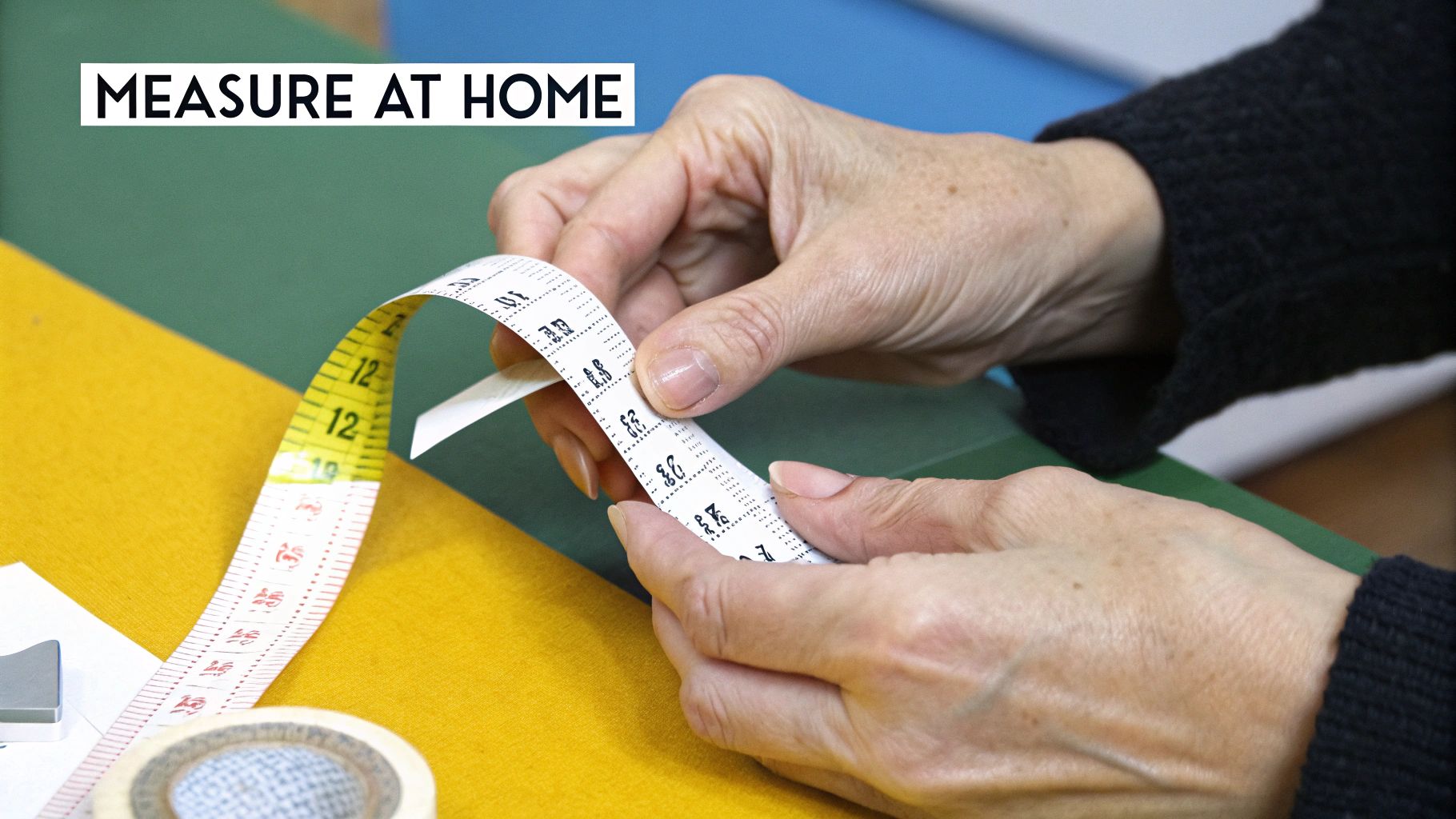
Ready to find a reliable ring size without stepping out your front door? It's totally possible, and you can get a surprisingly accurate measurement using just a few things you already have. Forget the guesswork—these tried-and-true methods, when done with a little care, will give you the confidence to pick the perfect ring online.
The two most popular at-home techniques are the string method and the paper strip method. They sound simple, and they are, but the magic is in the details. A little precision here goes a long way and saves you from the headache of a ring that’s just not right.
The String and Paper Strip Methods
Both of these methods work on the same basic idea: wrap something flexible around the finger, mark where it overlaps, and measure the length. Simple enough, but each has its quirks, and you might find one works better for you.
You'll need a thin, non-stretchy string (dental floss is great for this) or a narrow strip of paper. Cut a piece about six inches long to give yourself plenty of room to work.
Next, wrap the string or paper around the base of the finger where the ring will sit. The trick is to create a loop that feels snug, just like a real ring should. It needs to be firm but not so tight that it’s digging into your skin. This is the step where most people get it wrong, so take your time.
A common mistake I’ve seen is pulling the string too tight. This can lead to a measurement that’s a full size too small. The material should rest comfortably against your skin, not constrict it.
Once you’ve got the right tension, use a fine-tip pen to carefully mark the spot where the end overlaps. A crisp, precise mark is crucial here. A thick, blurry line can easily throw off your measurement by a quarter or even a half size.
Finally, unwrap the material and lay it flat against a ruler. Measure the length from the start to your mark in millimeters. This number is your finger’s circumference, which you can then use with a ring sizing chart to find your size.
Getting the Most Accurate Result
A single measurement is just a snapshot. Our fingers are dynamic—they swell and shrink slightly throughout the day based on temperature, what we've eaten, and how active we are. It’s a normal biological response most people don't even think about.
To get a truly reliable size, you'll want to measure your finger three or four times on different occasions. Try measuring once in the morning, again in the afternoon, and once more in the evening. This gives you a much better average to work with.
- Morning Measurement: Fingers can be a little smaller or even puffy right after you wake up.
- Afternoon Measurement: This is often the sweet spot. Your body temperature has stabilized, giving you a good baseline.
- Evening Measurement: After a full day, your fingers might be at their largest.
Taking the average of these measurements will help you land on a size that feels comfortable all day long, not just for a few hours.
Common Mistakes and How to Avoid Them
Even with the right approach, a few simple slip-ups can lead you down the wrong path. Knowing what to watch out for is half the battle.
One of the biggest issues is measuring only the base of the finger when the knuckle is much larger. If a ring can’t slide over the knuckle, the size of the finger's base doesn't matter much.
To get around this, measure both the base of your finger and your knuckle. The final ring size needs to be just large enough to get over the knuckle without being so loose that it spins at the base. Aiming for a size that falls between these two measurements is often your best bet.
Also, keep these quick tips in mind:
- Don’t measure cold hands. Your fingers shrink in the cold, which can result in a size that's too small. Let them warm up to room temperature first.
- Avoid measuring after a salty meal or alcohol. Both can cause temporary swelling and water retention, giving you a larger, inaccurate reading.
- Use paper over string if you can. String can stretch or compress, which makes it less reliable. A firm strip of paper tends to hold its shape much better.
By following this guide, you can get an at-home measurement that feels nearly custom. It's the perfect first step before you start exploring for that dream ring, like the beautiful options in our Precious Pulse Jewelry ring collection.
Using a Ring Sizer for Guaranteed Precision
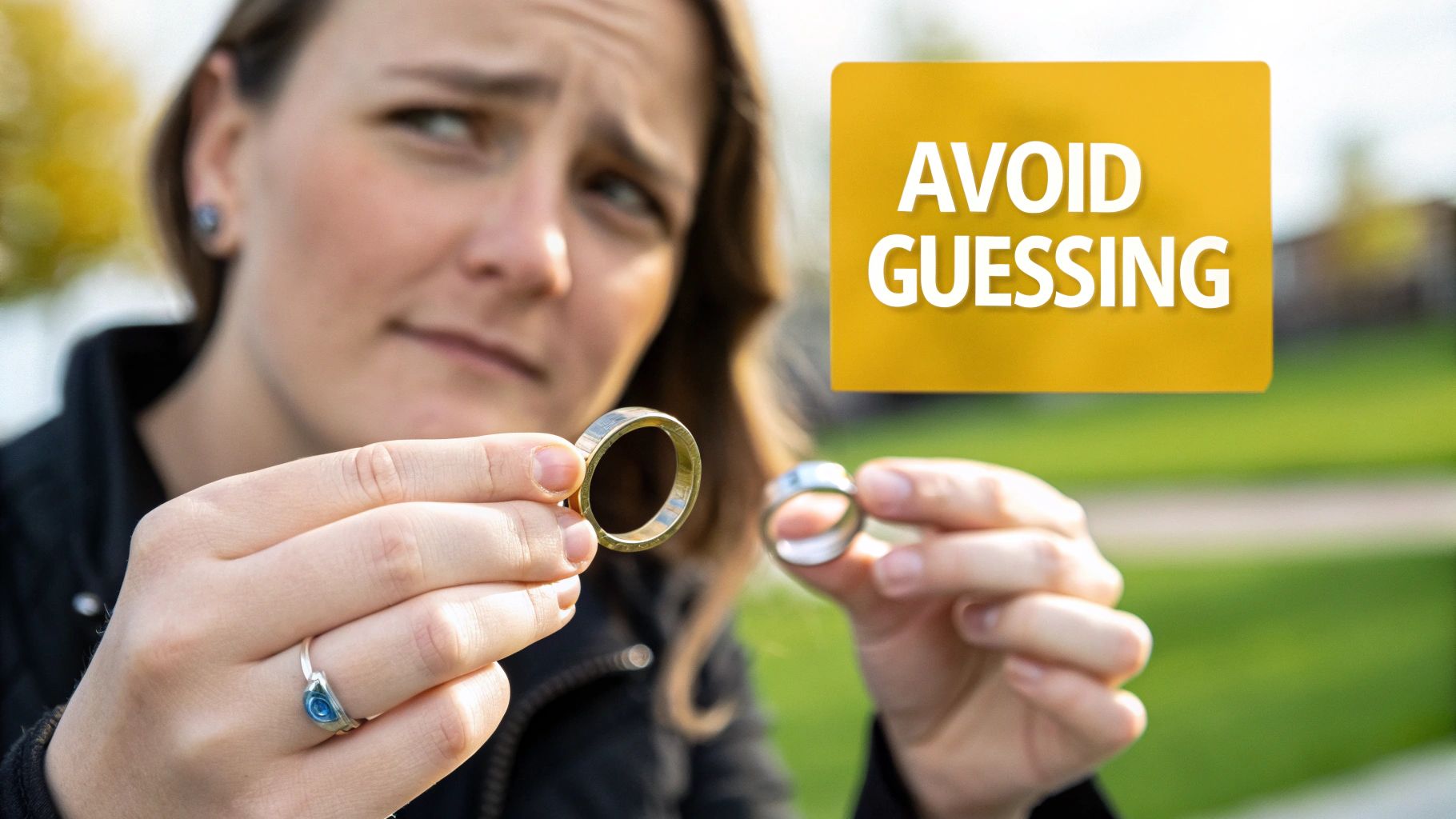
While at-home methods like using string or paper are decent starting points, they do leave a small margin for error. If you want absolute certainty on your journey to find the perfect engagement ring size, nothing beats the precision of a physical ring sizer. This small investment of time is the gold standard for preventing the cost and frustration of resizing a precious ring later on.
Think of it as the difference between eyeing a measurement and using a properly calibrated tool. A physical sizer completely removes the guesswork. It also gives you a real, tangible feel for how a ring will actually fit on the finger. Many online jewelers offer these tools for free or a very low cost because we know an accurate size is the first step to a happy customer. We recommend this approach for anyone ready to find their dream ring in our Precious Pulse Jewelry ring collection.
Two Trusted Types of Ring Sizers
When you start looking for a ring sizer, you’ll generally find two main types. Both are effective, but they offer slightly different experiences. Knowing the difference will help you pick the best one for your situation.
First, you have the adjustable plastic belt. This little gadget looks a lot like a zip tie with sizes marked right on it. You just slide the end through the buckle to create a loop, slip it onto the finger, and pull it until it’s snug. It’s a simple, reusable tool that’s incredibly easy to figure out.
The second option is the professional jeweler’s ring set. This is a collection of individual metal or plastic rings, with each one representing a specific size (e.g., size 6, 6.5, 7). This set lets you try on different sizes one by one to find the one that feels just right, which closely mimics the experience of trying on actual rings in a store.
The goal isn't just to find a number that fits the base of the finger. It's about simulating the entire experience of putting on and wearing a real ring, which is why testing the fit over the knuckle is non-negotiable.
How to Use a Ring Sizer Like a Pro
Using a sizer correctly is about more than just reading a number. The most critical part of the process is making sure the sizer can slide over the knuckle comfortably. A very common mistake is finding a size that fits the base of the finger perfectly but is too small to even get past the knuckle.
Here’s how to get a measurement you can rely on:
- Slide the sizer on. Whether you're using the adjustable belt or a ring from a professional set, get it onto the intended finger.
- Check the knuckle. Gently try to slide it back and forth over the knuckle. It should go on with a little bit of resistance but shouldn't require you to force it. If you have to twist and jam it on, it’s definitely too tight.
- Assess the fit. Once it’s on, the sizer should feel secure at the base of the finger without being constricting. Give your hand a little shake; it shouldn't feel like it’s about to fly off.
- Take it off. The sizer should come off over the knuckle with a little bit of effort. If it just slides right off with no resistance at all, it's too loose.
This simple process ensures the final ring will be both secure enough for daily wear and easy enough to put on and take off. This hands-on approach is invaluable, especially when you're trying to select the perfect setting. Of course, the diamond is just as important as the fit; you can learn more about finding the ideal diamond for an engagement ring in our detailed guide. Taking the time to get both the size and the stone right ensures a flawless result.
Navigating International Ring Size Conversion Charts
Shopping for a ring online opens up a breathtaking world of designs from international jewelers. But this global marketplace comes with one small, crucial challenge: not all countries use the same sizing system. A size 7 in the US isn't a size 7 in the UK, and understanding these differences is the key to ensuring a ring from overseas fits perfectly.
It might feel confusing at first, but with a reliable conversion chart, you can confidently translate your size across borders. It’s less about memorizing numbers and more about knowing which system a jeweler uses and how to find your equivalent.
Understanding the Major Sizing Systems
Globally, there are a few main sizing standards you'll run into. While local variations exist, most international jewelers operate using one of these three systems. Knowing which is which will help you decode any size chart you come across.
- US & Canada: This system uses a numerical scale, often including half and quarter sizes (e.g., 6, 6.5, 6.75). It's based on the inner diameter of the ring. Precious Pulse Jewelry uses this standard.
- UK & Australia: This standard uses letters of the alphabet, which can also include half sizes (e.g., M, M ½).
- European (ISO 8653): This system is the most straightforward. The size is simply the inner circumference of the ring in millimeters (e.g., 54.5). Many European countries, including France, Germany, and Russia, use this or a similar standard.
How to Use a Conversion Chart Correctly
A conversion chart is your best friend when shopping internationally. To use it, you just need one accurate measurement to start with—your size in your local system. For example, if you've been measured as a US size 7, you can look across that row to find your equivalent size in other systems.
The numbers below show just how precise you need to be. The difference between full sizes is often less than a single millimeter.
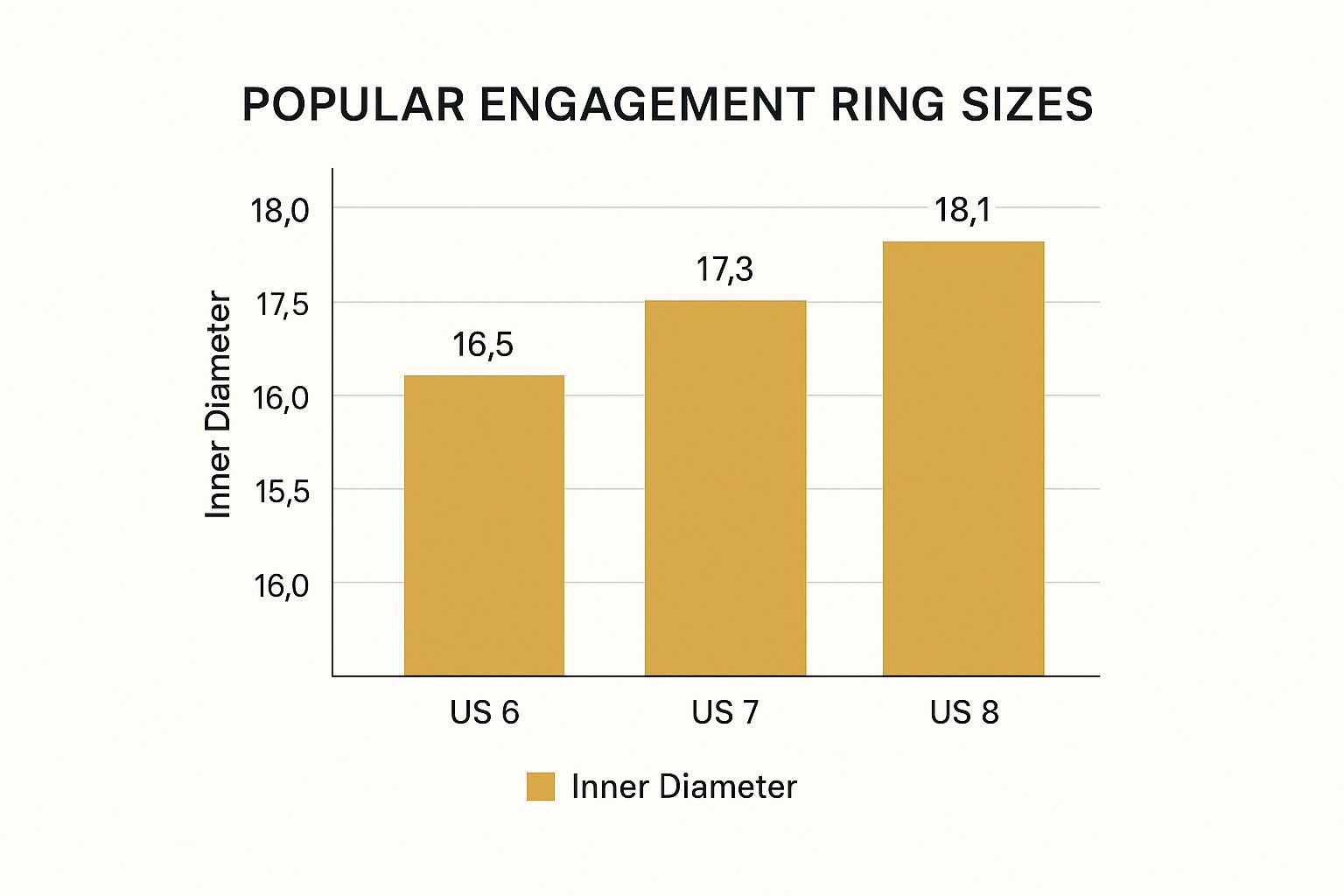
This table compares ring sizes across different international standards, including diameter and circumference measurements, to help you find your perfect fit anywhere in the world.
International Ring Size Conversion Chart
| US & Canada (Size) | UK & Australia (Letter) | France & Russia (EU Size) | Germany (U-Size) | Japan (Number) | Diameter (mm) | Circumference (mm) |
|---|---|---|---|---|---|---|
| 5 | J ½ | 49.3 | 15.75 | 9 | 15.7 | 49.3 |
| 6 | L ½ | 51.9 | 16.5 | 11 | 16.5 | 51.9 |
| 7 | O | 54.4 | 17.25 | 14 | 17.3 | 54.4 |
| 8 | Q | 57.0 | 18 | 16 | 18.1 | 57.0 |
| 9 | R ¾ | 59.5 | 19 | 18 | 18.9 | 59.5 |
Let's walk through a real-world scenario. Imagine you live in the United States and have determined your perfect fit is a US size 6.5. You then fall in love with a ring from a boutique jeweler in London. Using a full chart, you would find that a US 6.5 corresponds to a UK size M or an EU size 53.1. That's the size you would confidently order.
Pro Tip: Always double-check which sizing system a retailer uses. Most international websites will specify this on their product pages or in a sizing guide. If you're ever unsure, don't hesitate to contact their customer service for clarification.
Why Regional Preferences Matter
Understanding international sizing is also tied to global market trends. Engagement ring demand has strong regional variations, which can influence style availability and popular sizes. For instance, North America is the largest single market, representing about 40% of global sales. Here, the average ring size for women often falls between a US size 6 and 7.
In contrast, the Asia-Pacific region is one of the fastest-growing markets. As Western engagement traditions gain popularity in countries like China and India, local preferences merge with global styles, creating a diverse landscape. You can explore more about these engagement ring market dynamics to see how culture shapes the jewelry world.
This awareness helps you make a more informed choice when shopping from designers around the globe. With these tools and a bit of knowledge, you can find the perfect engagement ring from anywhere and be sure it will be a perfect fit when it arrives. At Precious Pulse Jewelry, we use the standard US sizing to keep it simple, but we want you to feel prepared for any shopping journey.
Insider Tips for Nailing the Perfect Ring Fit
https://www.youtube.com/embed/f-3BPa5W8RQ
Getting an accurate measurement is the first step, but the real secret to a perfect fit comes from understanding all the little things that can make a ring feel different from one day to the next. These are the insider details professional jewelers always consider to take a fit from good to flawless.
It's about more than just a number on a sizing chart. It's about knowing how a ring will feel out in the real world. Many people are surprised to learn their finger size isn’t static—it can actually change throughout the day and even with the seasons.
The Impact of Ring Style and Design
Not all rings are created equal, and their design plays a huge role in how they fit. A ring's width is one of the most important factors to think about, especially for something you'll wear every day, like an engagement ring.
A wider band—anything 6mm or more—covers more of your finger. This creates more friction and skin displacement, making the ring feel much tighter than a delicate band of the exact same size. As a general rule, you should think about going up a quarter or even a half size for a wide-band ring to make sure it stays comfortable.
Another game-changer is the ring's interior. Many modern rings feature a "comfort fit" design, where the inside of the band is slightly domed. This curve reduces the amount of metal touching your skin, letting the ring slide over your knuckle more easily and sit more comfortably. If you're comparing a standard flat-fit ring and a comfort-fit ring of the same size, the comfort-fit will almost always feel looser.
The perfect fit is all about balance. The ring should be secure enough that you never worry about it falling off, but loose enough to slide over your knuckle with just a little bit of resistance. If you have to struggle to get it on or off, it's too tight.
How Your Body and Environment Affect Fit
Your fingers are surprisingly sensitive to your surroundings and lifestyle. Forgetting about these natural changes is a common mistake that can lead to an uncomfortable fit down the road.
- Weather and Temperature: Heat and humidity make your fingers swell, while cold weather causes them to shrink. This is why a ring that feels perfect in a cool, air-conditioned jewelry store might feel uncomfortably snug on a hot summer afternoon.
- Diet and Hydration: Salty foods and alcohol can cause temporary water retention, making your fingers puff up. If you measure your finger right after a salty meal, you might get a slightly inflated reading.
- Time of Day: Your fingers are often a bit smaller in the morning and tend to swell as the day goes on. The ideal time to measure your finger is in the late afternoon when your body temperature is stable and your fingers are at their most average size for the day.
Keeping these variables in mind is critical for finding a size that will feel great all day, every day.
The Growing Importance of an Accurate Fit
Getting the right fit is more important than ever, not just for your comfort, but for the jewelry industry as a whole. The wedding ring market, which is closely tied to engagement rings, was valued at USD 84.91 billion in 2024. As this market continues to grow, customer satisfaction depends on getting the sizing right the first time. You can learn more about how sizing innovations are shaping the expanding wedding ring market and helping to reduce costly returns for everyone involved.
Ultimately, knowing the nuances between different types of jewelry can also help guide your choice. For instance, the considerations for a fine jewelry piece like an engagement ring are quite different from those for an everyday fashion accessory. If you're curious, you can learn more about what is the difference between fashion jewelry and fine jewelry in our helpful guide.
By combining an accurate measurement with these insider tips, you’re setting yourself up for a lifetime of comfortable, confident wear.
Common Ring Sizing Questions Answered
Even with the best tools and a little bit of know-how, ring sizing can still feel a bit tricky. It’s completely normal to have a few last-minute questions before you commit to such a meaningful purchase. This section is all about clearing up those final doubts.
We’ll tackle everything from those pesky in-between sizes to the art of finding your partner's size without spoiling the surprise. Think of this as your final check-in to make sure every detail is just right.
What If I Am Between Two Sizes?
Finding yourself stuck between two standard ring sizes isn't just common—it's practically a rite of passage. If you’re wavering between, say, a size 6 and a 6.5, the best advice I can give is to always choose the larger size. It’s far easier, safer, and cheaper for a jeweler to make a ring a little smaller than it is to stretch it bigger.
Sizing a ring down is a straightforward process. A jeweler simply removes a tiny piece of the band and solders it back together seamlessly. Trying to size up, on the other hand, means stretching the metal or adding a new piece. This can weaken the ring's structure, especially if it’s an intricate design or has pavé stones set along the band.
Expert Takeaway: When in doubt, size up. A ring that’s a touch too loose can be managed with temporary fixes like sizing beads or a small plastic guard until you can get it professionally resized. But a ring that’s too tight is unwearable from the start and puts the ring's design at greater risk during alteration.
How Can I Secretly Find My Partner's Ring Size?
The surprise proposal is a beautiful tradition, but it comes with a built-in challenge: figuring out their ring size on the down-low. Don't worry, with a little creativity, you can become a sizing super-sleuth.
Here are a few tactics that actually work:
- Borrow an Existing Ring: This is the gold standard. If you can, sneak away with a ring they often wear on their ring finger and take it straight to a jeweler. If you only have a few minutes, you can press it into a bar of soap to create an impression or carefully trace the inside of the ring on a piece of paper.
- Enlist a Co-Conspirator: A close friend or family member of your partner can be your secret weapon. They could casually bring up jewelry in conversation or suggest trying on rings together while out shopping, "just for fun."
- Create a Decoy Mission: Tell your partner you’re shopping for a ring for your mom or sister and need their help. Ask them to try on a ring or a sizer to see if it would be a good fit for your relative. It's a classic for a reason.
Subtlety is your best friend here. The goal is to get a solid estimate without tipping them off. If all else fails, remember that the average ring size for women in the US falls between a 6 and a 7. Starting with a size 7 is often a safe bet for a surprise.
Sizing Differences for Wide and Thin Bands
Here’s a crucial detail that often gets overlooked: the width of the band dramatically changes how a ring fits. It’s not just about the diameter; it's about how much real estate the ring takes up on your finger.
A thin, delicate band (usually under 3mm) makes minimal contact with your skin, so your standard size should feel just right. But a wide band (anything 6mm or more) covers a larger surface area, displacing more skin and creating a much snugger fit.
Because of this, you should almost always go up by at least a quarter-size for a wider band. That small adjustment makes a world of difference, giving you the extra room needed for comfortable, all-day wear. Understanding how different ring types fit is also key, especially if you're planning for a wedding set. For more on that, you can read about whether you should get an engagement ring and a wedding ring as separates or a matched pair.
At Precious Pulse Jewelry, we believe finding the perfect ring should be an exciting and stress-free experience. Explore our beautiful collection of engagement rings and other fine jewelry, armed with the knowledge to make a confident choice. Visit us at https://preciouspulsejewelry.com to find your forever piece today.
Article created using Outrank
